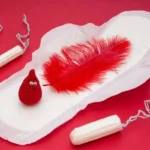Advertisement
Tampons: A Convenient Option for Active Teens
Tampons are a popular choice for many teens because they are discreet, convenient, and allow for greater freedom during physical activities like swimming and sports. However, it’s important to understand how to use them safely and correctly.
What Are Tampons?
Tampons are small, cylindrical products made of soft, absorbent material (usually cotton) that are inserted into the vagina to absorb menstrual blood. They come in various sizes and absorbencies to suit different flow levels.
How to Choose the Right Tampon
When choosing a tampon, consider the following factors:
- Absorbency: Tampons come in different absorbencies, including light, regular, super, and super plus. It’s important to choose the lowest absorbency that will handle your flow to reduce the risk of Toxic Shock Syndrome (TSS), a rare but serious condition.
- Applicator vs. Non-Applicator: Some tampons come with an applicator, a plastic or cardboard tube that helps with insertion. Others are non-applicator, meaning you insert them using your fingers. Applicators can be more convenient for beginners, but it’s a matter of personal preference.
- Material: Most tampons are made of cotton or a cotton-rayon blend. Some people prefer organic cotton tampons, which are free from synthetic chemicals and pesticides.
- Size: Tampons are also available in different sizes. Beginners may find smaller, slender tampons more comfortable to use.
How to Insert a Tampon
Inserting a tampon can feel intimidating at first, but with practice, it becomes easier. Here’s a step-by-step guide:
- Step 1: Wash Your Hands: Always wash your hands before inserting a tampon to reduce the risk of infection.
- Step 2: Get Comfortable: Find a comfortable position, such as sitting on the toilet, standing with one foot on the toilet seat, or squatting.
- Step 3: Unwrap the Tampon: If your tampon has an applicator, hold it at the grip (the ridged part) with your thumb and middle finger. If it’s a non-applicator tampon, hold it by the base.
- Step 4: Insert the Tampon: Gently insert the applicator or tampon into your vagina at a slight angle, aiming toward your lower back. If using an applicator, push the inner tube with your index finger until it’s fully inside the outer tube, then remove the applicator. If using a non-applicator tampon, use your index finger to push the tampon in until it’s comfortable.
- Step 5: Check the String: The tampon string should hang outside your body for easy removal.
- Step 6: Dispose of the Wrapper: Dispose of the tampon wrapper and applicator (if used) in the trash, not the toilet.
How to Remove a Tampon
Tampons should be changed every 4 to 8 hours, depending on your flow. To remove a tampon:
- Step 1: Wash Your Hands: As with insertion, start by washing your hands.
- Step 2: Get Comfortable: Find a comfortable position, similar to when you inserted the tampon.
- Step 3: Relax: Relax your muscles to make removal easier.
- Step 4: Gently Pull the String: Slowly pull the string downward and forward to remove the tampon. It should come out easily.
- Step 5: Dispose of the Tampon: Wrap the used tampon in toilet paper and dispose of it in the trash. Do not flush tampons down the toilet, as they can cause plumbing issues.
Important Safety Tips for Using Tampons
While tampons are safe to use, it’s important to follow these guidelines to reduce the risk of TSS and other complications:
- Use the Lowest Absorbency: Choose the lowest absorbency that will manage your flow. This reduces the risk of TSS.
- Change Tampons Regularly: Never leave a tampon in for more than 8 hours. Change it more frequently if your flow is heavy.
- Alternate with Pads: Some experts recommend alternating between tampons and pads, especially at night, to reduce the risk of TSS.
- Know the Symptoms of TSS: Symptoms of TSS include sudden high fever, vomiting, diarrhea, dizziness, fainting, and a sunburn-like rash. If you experience any of these symptoms while using a tampon, remove it immediately and seek medical attention.










